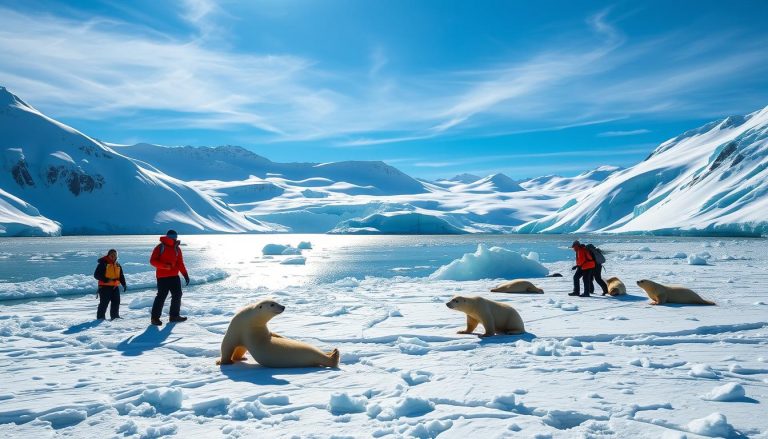Ever dreamed of exploring Antarctica, the last great wilderness on Earth? This frozen continent boasts stunning glaciers, majestic icebergs, and diverse wildlife. It’s a true paradise for adventure seekers. But what are the best things to do here? Let’s uncover the top experiences that will make your Antarctic expedition unforgettable.
Key Takeaways
- Witness the awe-inspiring landscapes of Antarctica, from towering glaciers to vast icy expanses.
- Encounter a variety of wildlife, including penguins, seals, and whales, in their natural habitats.
- Embark on thrilling activities like kayaking, camping, and zodiac tours to immerse yourself in the Antarctic experience.
- Discover the rich history and scientific research of this remote continent by visiting research stations.
- Explore the unique ecosystem and challenges of the Drake Passage, the gateway to Antarctica.
Exploring the Drake Passage: Gateway to Antarctica
The Drake Passage is a stretch of water between South America and Antarctica. It’s known for its rough seas and unique wildlife. It’s a key spot for those exploring Antarctica by sea.
Understanding the Drake's Unique Ecosystem
The Drake Passage is home to a wide variety of marine life. Warm and cold currents mix here, creating a rich environment. You might see humpback whales, dolphins, and seabirds like albatrosses and petrels from your ship.
Wildlife Spotting Opportunities
February and March are the best times for whale watching in the Drake Passage. Humpbacks and other whales gather in the area. Your team will help you spot these creatures and the seabirds flying above.
Preparing for the Southern Ocean's Challenge
Traveling through the Drake Passage can be exciting but rough. Modern ships and weather tracking have made it safer. Still, seasickness medication is advised. You’ll need comfortable clothes, sturdy shoes, and a sense of adventure for the two-day journey.
The Antarctic cruise season is from late November to March. December and January are the warmest months. Booking your cruise a year or more in advance is best to see the wonders of the Drake Passage and Antarctica.
Adventure Activities in the Antarctic Peninsula
The Antarctic Peninsula is a thrilling place for adventure seekers. You can kayak among icebergs or climb snow-capped peaks. It’s a unique chance to explore the frozen wilderness.
Kayaking is a favorite activity here. As you paddle, you might see whales, seals, and seabirds. The scenery, with its glaciers and cliffs, is stunning.
For the brave, there’s mountaineering. Climbers can tackle peaks like Vinson Massif, the highest in Antarctica. The untouched landscapes make for an unforgettable climb.
Scuba diving and snorkeling are also exciting. They let you see the underwater world. You’ll find colorful sea creatures and curious seals in the cold waters.
No matter your adventure, the Antarctic Peninsula is unforgettable. You’ll see breathtaking beauty and discover new things. It’s a place of awe and wonder.
Kayaking Among Icebergs and Marine Wildlife
Explore the calm Antarctic waters by kayak. You’ll see icebergs and marine life up close. Wear your dry suit and get ready to paddle the Antarctic Peninsula.
Safety Measures and Equipment
Safety is key in Antarctica. Guides will teach you how to stay safe. You’ll wear dry suits and other gear to keep warm and dry.
Best Spots for Paddling Adventures
The Lemaire Channel is a great place to kayak. It’s surrounded by icebergs and cliffs. Paradise Bay is also beautiful, with glaciers and mountains.
Wildlife Encounters While Kayaking
Look out for whales, seals, and penguins while kayaking. These animals are common in Antarctica. Seeing them up close is unforgettable.
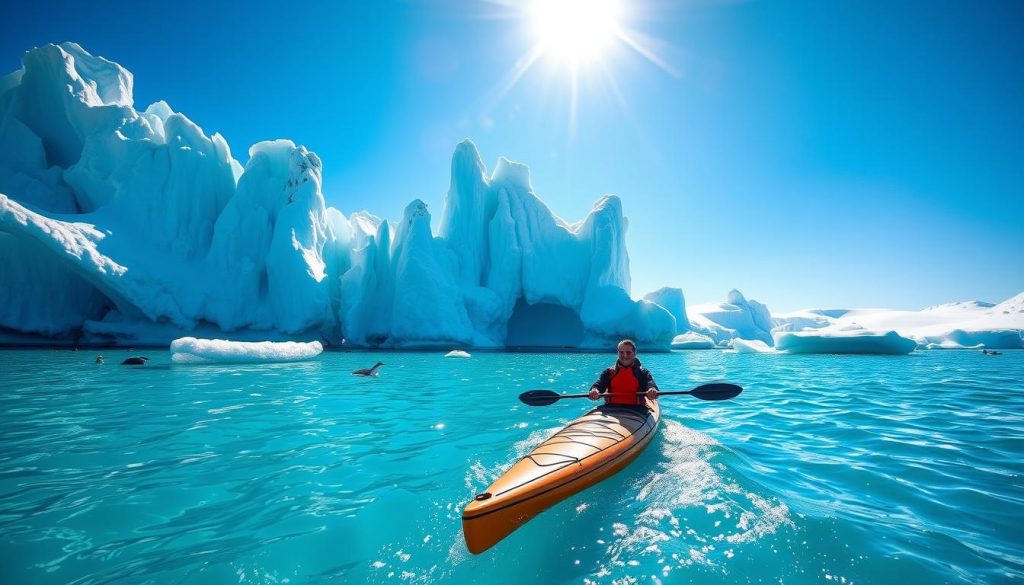
“Kayaking in Antarctica was a truly magical experience, allowing me to connect with the incredible landscape and wildlife in a way I never thought possible.”
Kayaking in Antarctica is an adventure you’ll never forget. It’s perfect for both experienced and new kayakers. Paddle among icebergs and see wildlife in their home.
Polar Plunge Experience at Deception Island
Dive into the icy waters of Antarctica’s Deception Island for a polar plunge you’ll never forget. This adventure happens on a volcanic beach. Here, you can swim in the caldera of an active volcano, surrounded by breathtaking Antarctic views.
Your safety is our top priority during the polar plunge. Guides with safety lines and warm towels make sure you have a safe and fun time. As you face the cold waters, you’ll feel a deep connection with Antarctica’s wild beauty.
After your icy dip, warm up with hot chocolate or a celebratory drink. Some operators on Deception Island offer these treats. This experience is a must-do, giving you unforgettable memories and stories to share.
“The polar plunge at Deception Island was the highlight of my Antarctic adventure. It was an exhilarating and unforgettable experience that truly immersed me in the raw power of the continent.” – Emily, a recent Antarctic explorer
Take the leap into Deception Island’s icy waters for a polar plunge you’ll always remember. It’s your chance to fully experience Antarctica and make memories that last a lifetime.
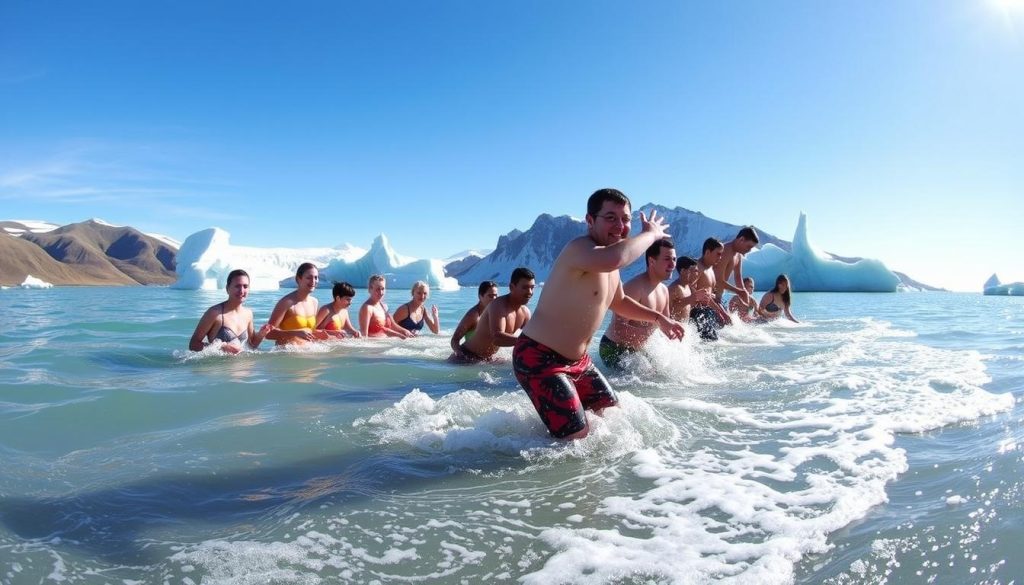
Penguin Colony Encounters and Wildlife Photography
Antarctica is home to many penguin species, like gentoo, Adelie, and emperor penguins. Places like Petermann Island and Port Lockroy are great for seeing these birds up close. Many trips also have photography workshops and expert photographers to help you get the best shot.
Different Penguin Species to Observe
The Antarctic Peninsula and nearby islands have many penguin species. Gentoo penguins are easy to spot because of their bright orange beaks and white heads. Adelie penguins have black backs and white bellies. Emperor penguins, the biggest, live on the sea ice with their chicks.
Photography Tips and Best Locations
Photographers love Antarctica for its stunning landscapes and wildlife. With help from experienced guides, you can learn to capture the beauty of the continent. Petermann Island and Port Lockroy are top spots for penguin photos, offering close views of gentoo and Adelie penguins.
Responsible Wildlife Viewing Guidelines
When visiting Antarctica, it’s important to observe wildlife responsibly. Keep at least 5 meters away from animals, unless they come to you. Don’t disturb penguins or their nests. Always follow your guides’ instructions for a safe and enjoyable trip.
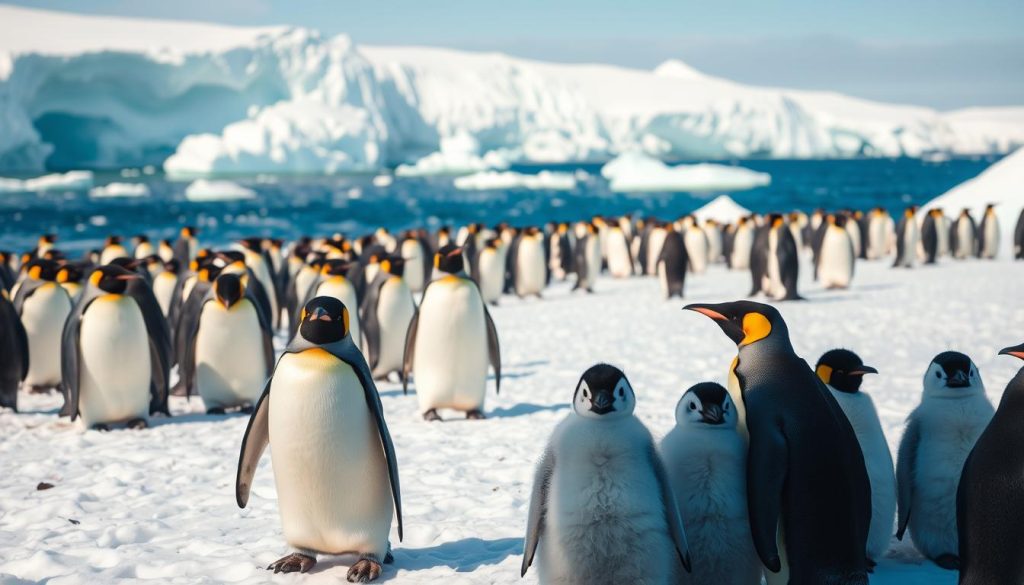
“Antarctica is a land of extremes, where the penguins brave the harshest conditions on Earth to raise their young. Witnessing their resilience and adaptability is a humbling and awe-inspiring experience.”
South Pole, Antarctic: Best Things to Do - Top Picks
Looking for the ultimate polar adventure? The South Pole and Antarctica have plenty to offer. You can stand at the southernmost point on Earth or explore unique wildlife and natural wonders. There’s always something exciting to do during your South Pole trip.
Visiting the ceremonial South Pole marker is a big draw. It’s a place that has attracted adventurers for years. You can also check out the Amundsen-Scott South Pole Station. It’s a research facility that pushes the limits of science in this harsh environment.
For the brave, skiing to the South Pole or a day trip by air is thrilling. These adventures give you amazing photo chances. Standing at the southernmost point is a rare achievement, with only 500 people doing it each year.
The South Pole area is also a center for scientific research. Visitors can learn about the important work done to understand the ecosystem and climate. It’s a chance to see the continent’s unique role in the world.
Whether you want a once-in-a-lifetime expedition or a closer look at Antarctica’s wonders, the South Pole is unforgettable. It promises an adventure you’ll never forget.
“Visiting the South Pole was a dream come true. Standing at the southernmost point on Earth, surrounded by the vast, pristine wilderness, was a truly humbling and awe-inspiring experience.” – Amanda, Antarctic explorer
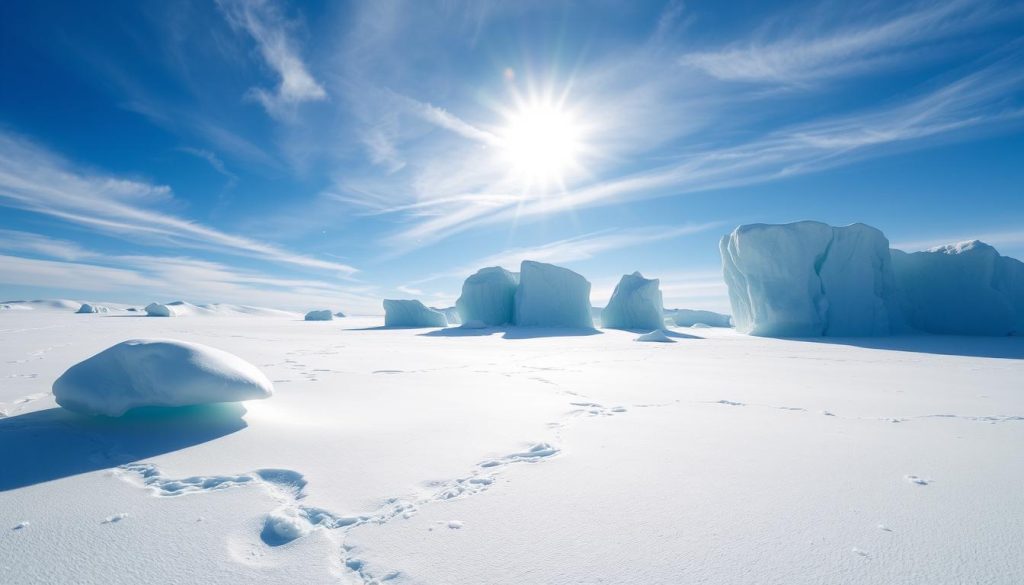
Research Station Visits and Cultural Experiences
Antarctica’s frozen landscapes are more than just a backdrop for outdoor adventures. Visiting the continent’s research stations gives you a peek into scientific exploration and the lives of those who live there. Places like the Ukrainian Vernadsky Research Station, where the ozone hole was found, and the U.S. McMurdo Station, show the heart of Antarctic science.
Antarctica also offers cultural experiences. At Port Lockroy, a former British base turned museum and post office, you can learn about early explorers and send postcards from the world’s southernmost post office. These visits educate and connect you with the people who work to understand and protect this untouched continent.
“Antarctica is the most unexplored area by mankind compared to other continents.”
Visiting an Antarctic research facility is an experience you won’t forget. It’s a chance to see the dedication and creativity of scientists and support staff. They face extreme conditions to expand our knowledge.
At a research station, you can see how people live and work in Antarctica. You’ll learn about the important discoveries made in these remote places. It’s a unique look at the efforts needed to live and explore in the world’s most southern continent.
Camping Under Antarctic Skies
Imagine sleeping under the vast, starry skies of Antarctica. You’re surrounded by the continent’s otherworldly landscape. Camping here is a once-in-a-lifetime experience. It lets you truly immerse yourself in the Antarctic camping adventure.
Essential Gear and Preparation
When camping in Antarctica, preparation is key. You’ll need high-quality bivy sacks and warm, breathable clothing. Other essential gear helps you stay comfortable in the cold.
The average temperature during our overnight adventures was around -5°C. So, having the right equipment is crucial.
- Thermal underwear
- Warm sweater
- Down outer jacket
- Trousers
- Warm headgear and gloves
- Thick socks
- Sunglasses and sunblock
Safety Protocols and Environmental Guidelines
Safety is the top priority when camping in the Antarctic. Strict protocols protect both the environment and participants. No food is allowed on shore to avoid disrupting the ecosystem.
Responsible wildlife viewing guidelines must be followed at all times.
Best Locations for Antarctic Camping
The best locations for Antarctic camping are chosen based on weather and wildlife. During our trip, we camped in a secluded area near a penguin colony. The setup took about an hour.
We used zodiac and polarcirkel boats for transportation to and from the campsite.
| Gear Provided | Number of Participants | Campsite Setup Time |
|---|---|---|
| 3-person tent, 2 breathable bivouac bags, foam pad, 2 inflatable sleeping pads | 30 people (including 14 couples) | Approximately 1 hour |
Camping under the Antarctic skies is a remarkable experience. It lets you connect with the environment deeply. While comfort may be minimal, the memories and sense of adventure will last a lifetime.
Conclusion
Going on an Antarctic adventure is a once-in-a-lifetime experience. You’ll see the famous Drake Passage and meet amazing wildlife. Every moment shows the beauty of nature.
Whether you’re kayaking, swimming, or camping, the memories will last forever. They will change how you see the world.
Getting ready, respecting the environment, and choosing a good tour company are crucial. There are many activities, like visiting research stations and learning about local cultures. With good planning and a sense of adventure, your trip will be incredible.
Antarctica is a must-see for any traveler. Its unique nature and beauty are awe-inspiring. By facing its challenges and marveling at its wonder, you’ll appreciate our planet more. So, start planning your trip and get ready for an adventure that will change you.

